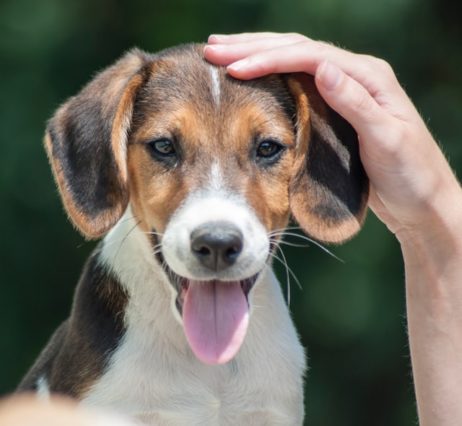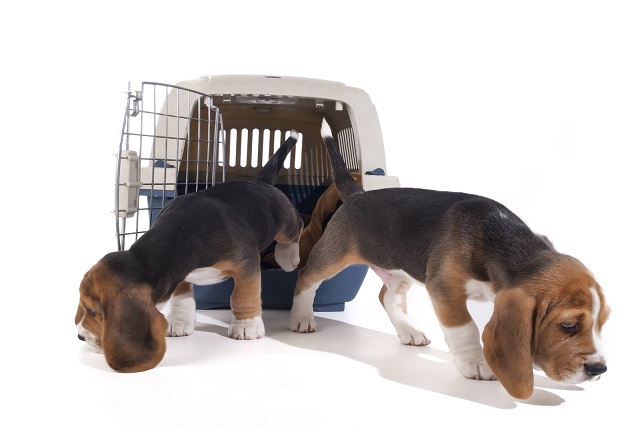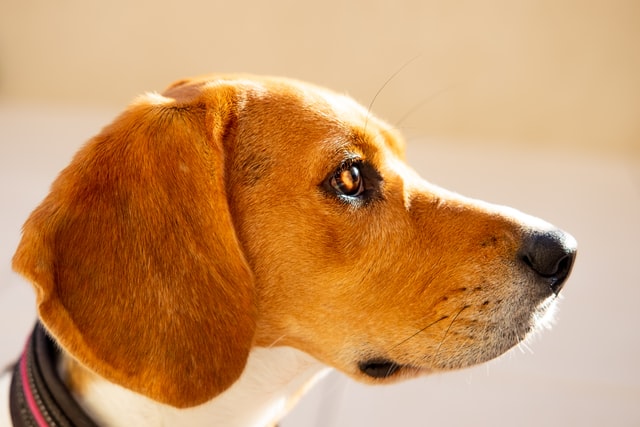Beagles are among the oldest of dog breeds, probably dating back to the 12th century AD. They are independent and will follow a scent to all abandon. This can make Beagle puppy training challenging, especially if you get a particularly stubborn one.
Choosing Your Beagle Puppy
Beagles are naturally friendly, but you’ll want to choose a puppy that is not showing signs of aggression and is at least 8 weeks old. Have a vet check the puppy for any health issues before finalizing your choice. Since Beagles are bred to stick together in packs, owners often consider adopting a pair.
Beagle puppy training should start when you bring your new puppy home and the first order of business is socialization. Continue this until 10 weeks of age to avoid aggression problems later.
Beagle Puppy Training
After socialization, the next step is housetraining your Beagle puppy. Since Beagles are a bit stubborn, this may take a little longer than “normal.” Crate training may be helpful and while you are housebreaking your puppy, you should plan to be at home as much as possible. Be patient during this time and before you know it, your pup will be taking his “business” outdoors.
After housebreaking and socialization, you’ll need to establish the pack pecking order with your Beagle. You need to firmly let the puppy know that you are in charge – the alpha dog leader. Puppies often try to test their place in the pack by biting or nipping. Giving him a chew toy and letting out a yelp or clear whining sound if he bites will help him understand that it hurts and is off-limits.
Pecking order includes physical boundaries. Keep your puppy off of the furniture and bed and continue to use the crate – for longer stretches now that your dog is housebroken – to help him understand his place in the pack.
Beagle puppy training should progress to teaching obedience during the next 3 to 6 months. Teach basic commands like lay down, sit, stay, and come. Another useful command can be “place,” in which your pup retreats to a designated spot to lay down (possibly the crate).
Find The Best Solution To Training Your Beagle Puppy…Click Here For Your Comprehensive Guide
Your pup will also need to learn to wait inside when you leave the house. Being a confident alpha leader here will help your puppy avoid separation anxiety – if you aren’t worried that you’ll be back, neither will he.
Leash manners are an important part of Beagle puppy training. You’ll need to teach him not to pull by maintaining a state of calm while he walks. Since your Beagle is a scent hound, he’ll want to keep his nose planted to the ground as you walk. You can teach him to focus more on you by offering a treat (especially a nice, “smelly” one) as you crouch periodically and get him to look you in the eye. After a while, he’ll enjoy looking up and making eye contact with you.
Beagle puppy training will be challenging, but your intelligent dog will learn quickly if you make it fun. Keep training sessions short, since Beagles have a short attention span and may get bored if you overdo it. At first, his stubbornness may make it seem like you aren’t making progress, but be patient and you’ll soon reap the rewards.
Using Beagle Puppy Training to Protect Your Dog
Beagles are curious and will follow their noses if left to do so. You’ll need to teach your dog not to chase cars and to stay away from the street (establish boundaries). Since the urge to follow a scent is so strong, you should always keep your Beagle on a leash when he’s not in a secure area. Eventually, if you work on recall commands, you may get to the point where he can be off the leash, but keep in mind that the tracking instinct will always be a higher risk with Beagles.
Beagle puppy training is a little more challenging than some other breeds, but if done properly, you’ll have one of the friendliest and loyal dogs and one that is eager to please. Just make the rules clear and make sure that your pup consistently follows them.




